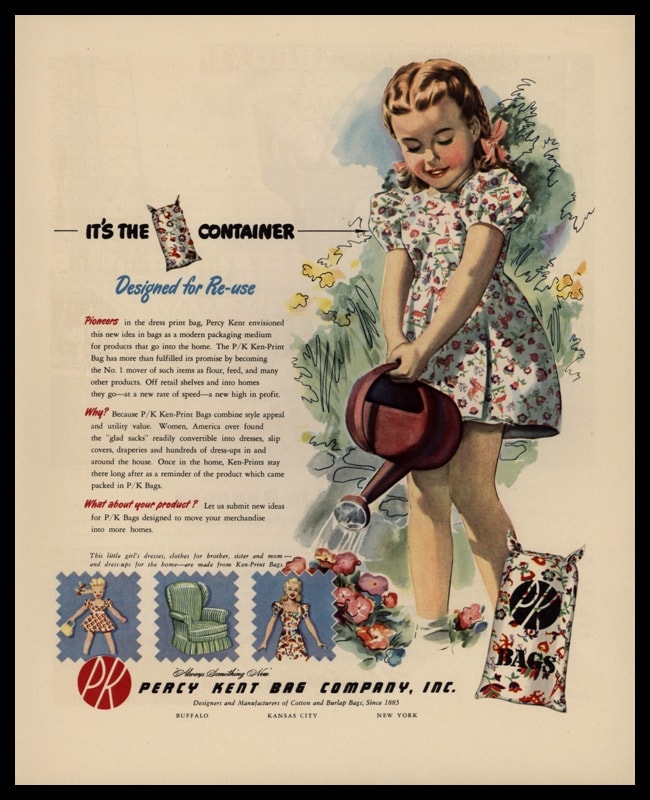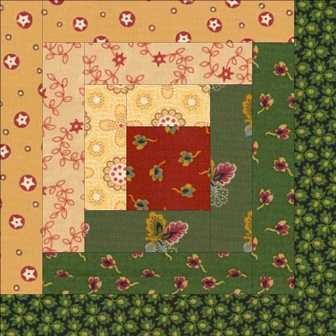Ad for a bag company showing some of the things made with their products.
People used every bit of the wheat plant – chaff, straw, and leaves. They also used all of the containers that carried the wheat, flour, hardtack, and all else made from the plant. Boxes, barrels, and tins held the flour and wheaten foods, along with sugar, salt, animal feed, and fertilizer before about 1850. From the mid-1800s until the mid-1900s, companies packaged flour and feed in cotton sacks that were cheaper, took up less space, and were more durable. Stitching machines invented in the mid-1800s reinforced the seams to make them even sturdier.
It made sense: fabric cost a lot, and most people had the habit of re-using things as much as possible. The average family used enough flour that they often bought it in fifty and hundred-pound sacks. One sack would make a child’s outfit, and three were enough for a woman’s dress. Women used cotton fabrics for curtains, bedspreads, underwear (which they made themselves), diapers, and toys. When an item had outlived its first life, women recycled the fabric into strainers, dish towels, scrub rags, braided rugs, quilts, and tote bags. Even the strings that tied the mouths of the bags shut had new lives in knitted and crocheted goods.
Log cabin quilt made with fabrics that could have come from flour sacks (National Park Service)
It didn’t take long for flour merchants to realize that women would buy the brand of flour with the nicest bags. They created fashionable florals, novelty designs, border prints, patterns for children’s stuffed toys. The instructions printed on the bags, and the company’s logo washed out, leaving permanent colors for the prints. Kansan Nancy Jo Leachman who collects flour sacks said that one mill advertised on the bag that its sacks were “[M]ade of percale, which makes a better dishtowel than our competitors.”
We think of the flour sack clothing as uniquely American, but Europeans, Chinese, and other cultures that relied on flour made similar uses of the bags.
The clothes had downsides. If the person who made your clothes (which could be you if you were 9 or 10 years old, or your mother or an older sister) hadn’t mastered seamtressing, your clothes did not look like a tailor made them, or store-bought. You and all of your siblings might have matching shirts and dresses, setting you apart as poor kids. For all of the admirable frugality and creativity that a flour sack dress could represent, often the most obvious message was one of class.
A fanciful flower sack pattern showing a ballerina (Kindness blog).
World War II demanded that citizens sacrifice many things for the military. Uniforms needed cotton, so manufacturers began to ship more flour in paper bags. Still, Disney licensed Alice in Wonderland and other characters for flour bags in 1951, and people were winning contests for the best flour sack dresses as late as 1959. These days, high end housewares stores sell cotton "flour bag" style towels for a premium, printed with patterns that twenty-first century buyers find charming rather than the prints that appealed to the earlier flour sack buyers.
Modern flour sack towels by Now Designs.
Thanks to Pat Fitzharris Newman for the inspiration for this post.




No comments:
Post a Comment